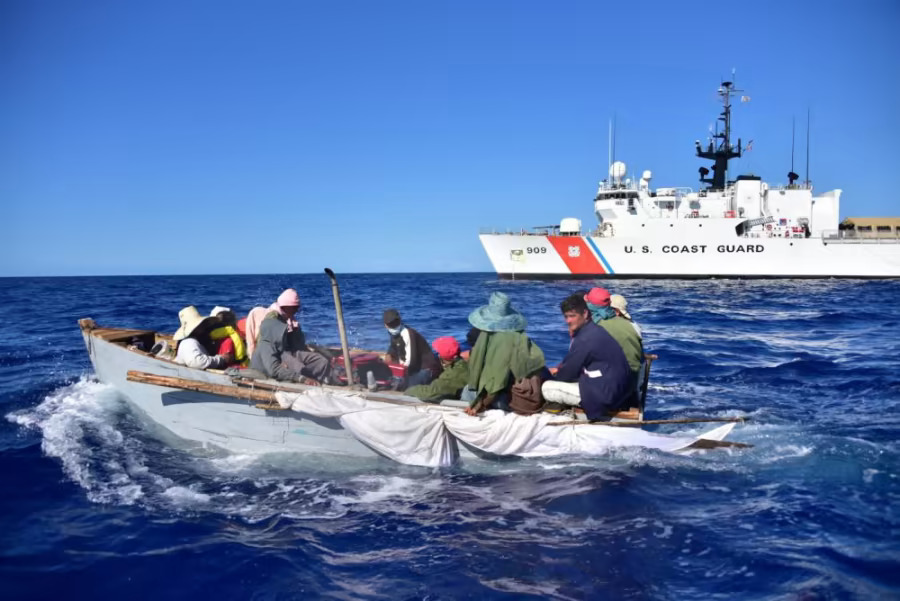The U.S. Coast Guard has repatriated 43 migrants to Cuba following two separate interdictions in the Florida Straits this week. The operation highlights the ongoing efforts to manage unlawful maritime migration in the region.
The first incident occurred on December 11, 2024, when a Coast Guard Air Station Miami aircrew spotted a migrant vessel approximately 50 miles south of Marathon. In the second case, reported by a good Samaritan on Sunday, a makeshift vessel capsized about 47 miles southwest of Islamorada. Five individuals were rescued from the water by the good Samaritan before the Coast Guard arrived.
Lt. Thomas Pease, an enforcement officer with the Coast Guard’s Seventh District, emphasized the risks of maritime migration during the winter months. “Even in relatively warm waters, prolonged exposure can lead to hypothermia,” Pease noted, urging individuals to avoid these dangerous journeys.
What happens to migrants who are caught?
Once aboard a Coast Guard cutter, migrants are identified and provided with essential care, including food, water, shelter, and medical attention. They are then repatriated to their country of origin or returned to the location from which they departed.
The interdictions are part of Operation Vigilant Sentry, a collaborative effort involving the Coast Guard and Homeland Security Task Force – Southeast (HSTF-SE). This multi-layered approach aims to ensure safety at sea while preventing unlawful maritime entry into the United States and its territories.
Why do migrants risk these journeys?
Many undertake perilous sea voyages in search of better opportunities or to escape challenging conditions in their home countries. However, these journeys often involve overcrowded, unsafe vessels and unpredictable weather, posing significant risks to life.
As the Coast Guard and its partners maintain a robust presence in the Florida Straits, the Windward Passage, and the Caribbean Sea, they remain committed to safeguarding lives and enforcing maritime laws.

